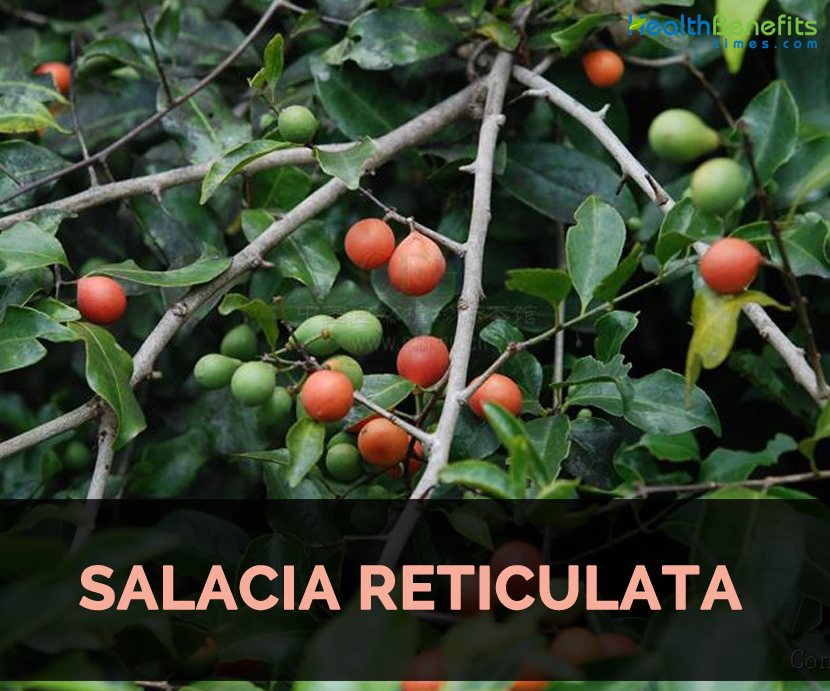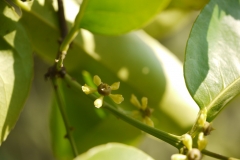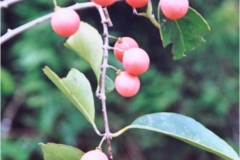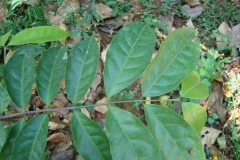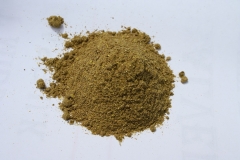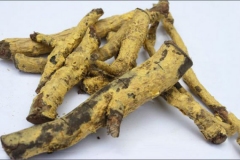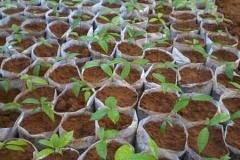Salacia exhibits antimicrobial, hepatoprotective, antimalarial, anti-inflammatory and anti-obese activities. The plant is over-exploited in India due to its multifarious therapeutic properties. It is used to treat diabetes which is a chronic disorder in metabolism of carbohydrates, fat and protein due to relative deficiency of insulin secretion. Root decoction of Salacia reticulate is used for treating rheumatism, gonorrhea, haemorrhoids, skin diseases, swelling, itching, thirst, asthma, dysmenorrheal and amenorrhea.
Plant description
Salacia reticulate is a climbing, perennial and woody shrub with dichotomous branching pattern. It has smooth and greenish grey bark. The plant has opposite and elliptic to oblong leaves. Leaf base is acute, margins are toothed, apex abruptly acuminate. Flowers are bisexual, greenish-white to greenish-yellow in color arranged as 2 to 8 clustered in leaf axils. It bears drupe as a fruit which is tubercular and globose in shape that becomes pinkish-orange when ripened. Fruit encompasses 1 to 4 seeds that resembles almond.
Health Benefits of Salacia reticulate
Here let us know the health benefits it offers:
- Weight loss
Animal studies have shown that Salacia reticulata prevents the accumulation of fat, promotes activity of genes which support fat breakdown and normalize glucose or lipid metabolism. Research exhibits that these properties are due to the presence of salacinol, mangigerin, kotalanol and kotalagenin 16-acetate. Studies conducted on animal shows that Salacia reticulata when used with cyclodextrin lowers the chances of weight gain, visceral fat, fat deposition and cholesterol or lipid levels in high fat diet induced obesity.
- Prevent fat absorption
Lipase is the enzyme which has a crucial role in deposition of fat and digestion. Studies shows that stem and leaves extract inhibit lipase activity. The polyphenolic compounds such as methylepigallocatechin, mangiferin, epicathechin and epigallocatechin shows strong inhibitory activities. It prevents metabolism as well as absorption of fat from diet. It enhance breakdown as well as excretion of fats.
- Lowers the cholesterol
Studies have shown that Salacia extracts lowers lipids and cholesterol effectively. Leaf and root extracts of 500 mg when taken for six weeks helps to lower cholesterol and lipid levels in patients with mild and moderate hyperlipidemia. Research exhibits the cholesterol lowering effect of root extract showing similar effect of simvastatin, an anti-hyperlipidemic drug.
- Anti-diabetic properties
Extracts of Salacia reticulata shows anti-diabetic property by lowering blood glucose. The balance of insulin and glucose levels results to effective utilization of carbohydrates in diet. It prevents the increment in glucose levels after meals and also controls appetite. The compounds found in Salacia reticulata extracts such as kotalanol and salacinol inhibits the activities of enzymes such as alpha-glucosidase, which involves in absorption and digestion of carbohydrates. Root extracts displays faster action in comparison to leaf extract in lowering glucose and cholesterol levels. A trial shows that herb can be used as an oral hypoglycaemic agent which normalizes blood sugar after an intake of meal rich in carbohydrates. An intake of herbal tea that contains Slacia reticulata helps to lower blood glucose.
- Anti-obese activity
Salacia helps to control problems associated to obesity. The study was conducted on obese patients. An enzyme pancreatic lipase is integral for digestion of dietary fat. It helps to lower weight in humans. It is reported that S. reticulate helps to suppress pancreatic lipase activity. It inhibits pancreatic lipase activity in small intestine and is a vital mechanism for depletion of postprandial hyperlipidaemia.
- Anti-proliferative activity
Salacia reticulate leaves shows anti-proliferative activity in interleukin-1- activated cells. An extract of 850 µg/ml demonstrates 50% inhibition in synoviocyte like cell lines and restrain matrix metalloproteinase genes. Results show that Salacia has noteworthy anti-proliferative activity.
Traditional uses
In Ayurvedic medicine, the aerial parts and roots of Salacia are used and in Unani and traditional Indian medicine.
References:
https://www.ncbi.nlm.nih.gov/pmc/articles/PMC5033029/
https://pdfs.semanticscholar.org/35cd/1a043d03a85844f7d358f0ca6e1d2d2fd946.pdf
https://www.ncbi.nlm.nih.gov/pmc/articles/PMC5033029/
https://en.wikipedia.org/wiki/Salacia_reticulata
https://healthyy.net/weight-loss/5-benefits-of-salacia-reticulata-in-weight-loss
Comments
comments
| Salacia reticulata Quick Facts | |
|---|---|
| Name: | Salacia reticulata |
| Scientific Name: | Salacia reticulata |
| Origin | India and Sri Lanka |
| Colors | Pinkish-orange |
| Shapes | Globose and tubercular |
